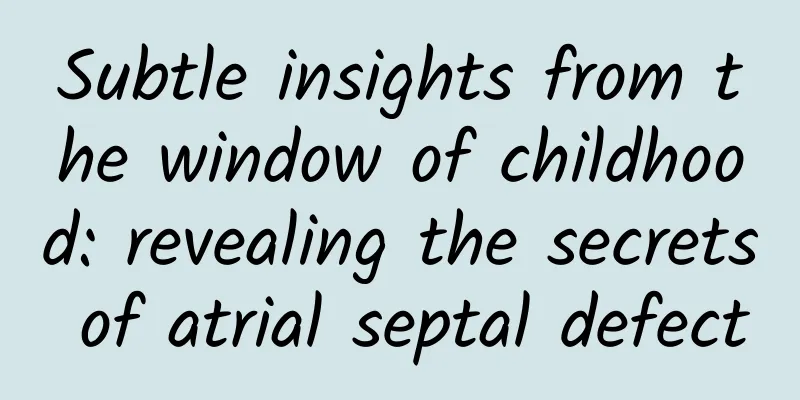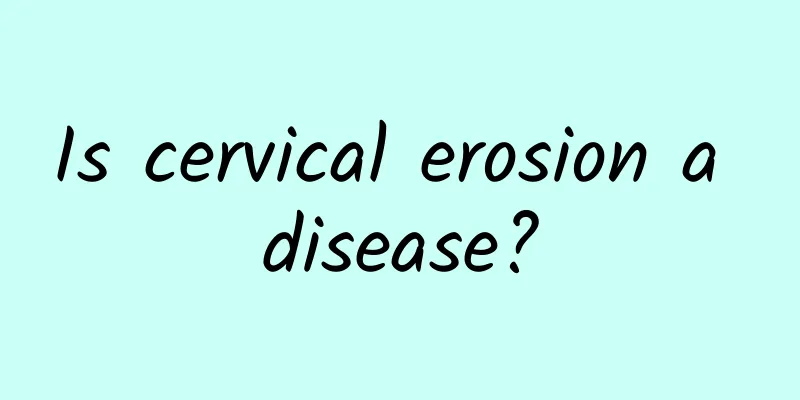Subtle insights from the window of childhood: revealing the secrets of atrial septal defect

|
Author: Zhang Xin, Chief Physician, Beijing Children's Hospital, Capital Medical University Reviewer: Wang Fangyun, Chief Physician, Beijing Children's Hospital, Capital Medical University Atrial septal defect (ASD) is like a "window" that is not completely closed, quietly affecting the heart health of children. It is not only a common type of congenital heart disease, but also the focus of attention and worry for many families. Now, let us unveil the mystery of atrial septal defect and understand its nature, symptoms, treatment and the difference from patent foramen ovale. Figure 1 Copyright image, no permission to reprint 1. What is atrial septal defect? The heart, as the engine of the human body, has a sophisticated and complex internal structure. A normal heart is divided into two atria, the left and right atria, by the atrial septum. When the atrial septum is not fully developed or the foramen ovale is not closed, causing the left and right atria to communicate, the blood in the left atrium enters the right atrium through the defect, which is an atrial septal defect. Atrial septal defects are relatively common, accounting for 10% to 15% of congenital heart diseases. Atrial septal defects can exist alone or in combination with other heart malformations. Although this abnormality sounds worrying, with the advancement of medical technology, its diagnosis and treatment methods have become increasingly mature. 2. What are the symptoms of atrial septal defect? The symptoms of atrial septal defect vary depending on the size of the defect. For many children, the defect may not be large, so there are no obvious symptoms in the early stages. It is often discovered accidentally during a physical examination with a heart murmur or an echocardiogram. Infants and young children with larger defects may have symptoms of heart failure, such as anorexia, rapid breathing, slow growth, and frequent colds. Older children may have symptoms such as palpitations, chest tightness, and decreased physical strength. Severe cases may experience difficulty breathing and cyanosis. Figure 2 Copyright image, no permission to reprint 3. How to treat atrial septal defect? If an atrial septal defect is found, the patient should go to a cardiologist clinic for treatment, complete relevant examinations, and be evaluated. Small atrial septal defects (defect diameter <5 mm) can be followed up and observed, and most will close spontaneously in infancy. The probability of medium or large atrial septal defects closing spontaneously is low, and individualized treatment should be performed based on the results of cardiac function assessment and complications. If the heart function is normal and there are no symptoms, elective surgery can be performed; if heart failure or pulmonary hypertension occurs, a comprehensive assessment should be performed and the appropriate time should be chosen for surgery. At present, surgical treatments for atrial septal defects include surgical repair, percutaneous minimally invasive interventional closure, and hybrid surgery that combines the two. The choice of surgical method depends on the age and weight of the child, as well as the size and location of the defect. 4. What is the difference between patent foramen ovale and atrial septal defect? When discussing atrial septal defects, it is important to mention the difference between them and patent foramen ovale. Although both involve potential shunts between the left and right atria, there are significant differences in their nature. Patent foramen ovale is a physiological or temporary condition caused by the opening of the ovale valve and does not involve the absence of atrial septal tissue. As the baby grows and develops, the foramen ovale usually gradually closes. Atrial septal defects, on the other hand, are a clear structural abnormality that requires medical intervention to correct. In summary, as a common type of congenital heart disease, the recognition, diagnosis and treatment of atrial septal defect require the joint efforts of parents and doctors. Through scientific monitoring, timely intervention and individualized treatment plans, we hope to protect this "window of childlike innocence" for children and let their hearts beat healthily on the road to growth. |
<<: 5 tips to say goodbye to back pain from sitting for a long time!
>>: Is the cerebellum also playing "thrilling drift"? ——Unveiling the secrets of Chiari malformation
Recommend
Can I eat celery during my period?
You need to pay special attention to your diet du...
"Diving" cooling is coming! Experts remind: Beware of this kind of disease
Yesterday it was still a scorching summer day wit...
Special planning of the "Health from Food" series丨Beware of "diseases from the mouth", be careful when eating these foods
Did you know that common foods in our daily lives...
What is Antweed? What is the use of Antweed?
Ant vegetable is a pure natural wild vegetable, w...
Photos of sagging skin at the age of 30
It is said that when women are over 30, they have...
Bleeding during intercourse two days after menstruation
Generally speaking, it is best to have sex 2-3 da...
Is glucosamine hydrochloride capsule a good medicine for treating osteoarthritis?
Abnormal temperature changes or holiday syndrome ...
Can I breastfeed while I have wisdom teeth?
With the news on TV that some infant formula cont...
Is it good for the fetus if pregnant women eat prunes?
Pregnant women have a heavier taste. Although we ...
What does an ant's home look like? Ant classification and division of labor
There are six main types of ants: big-headed ants...
How thick is the cervix?
The uterus is the place where the fetus survives....
What are the benefits of kidney tonification for women?
Many times when we talk about nourishing and repl...
What are the methods of self-examination for women?
Self-examination, as the name suggests, is a self...
What to do if too much milk causes breast pain
In order to maintain their figure, many postpartu...









